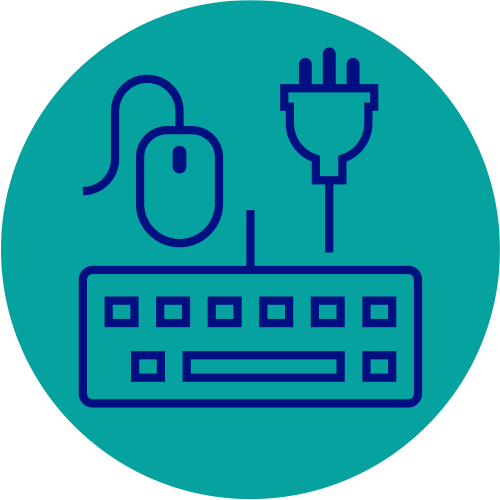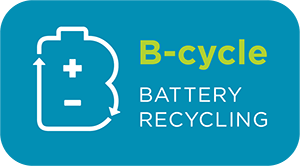
Bring it Back
Don’t bin it. Bring it back or Trade it in
Since 2015, we have collected more than 11,000 tonnes through our Bring it Back program and our tech trade in program. By keeping products and materials in use for longer through repair, reuse, and recycling, we can make a positive impact on the environment and transition to a more circular economy.
Learn more about our Bring it Back and Trade-In programs
Watch the video to find out what happens to your products after they are placed in our Bring it Back stations, or traded in online
People & Planet Recycling Pop-Up Days
We will be holding People and Planet Recycling Days in 2025! Find your local event below and save the date.
Start collecting used tech products and household batteries and help us make a positive difference to people and the planet.
All events will be held in the Officeworks car park from 10am to 5pm.
Officeworks trade-in program
Trade in your tech for an instant gift card
You may be done with your device, but chances are it still has life in it. If it’s in good shape, we’ll help it go to a new owner through our trade-in program. If not, bring your mobile phone, tablet, laptop or smartwatch to your nearest store and hand it to one of our team members in-store for recycling. We’ll send it to our trusted recycling partner, who will recover valuable materials and use them to make new products – helping to reduce waste and support a circular economy.
Visit our trade-in page to see whether your device qualifies for an Officeworks gift card.
Can’t trade it in? You can still recycle your old phone, laptop or tablet by simply handing it to a team member in store.
What items can I repair, repurpose or recycle in-store at Officeworks?
Officeworks no longer accepts batteries in-store. Visit the B-cycle website to find your local drop-off point.
Find out more
Audio & Tech Accessories
Accepted













Not accepted




Ink & Toner Cartridges
Accepted



Not accepted

Data & Storage
Accepted



Not accepted

Pens & Markers
Accepted








Not accepted

Pen and Marker recycling for schools
We're now making pen and marker recycling easy for schools! Schools can now pick up a pen recycling box from their local store.
Here's how your school can get involved.
- Talk to your local Officeworks about getting a recycling box for your school.
- Set up the recycling box in your school and display our list of recyclable items.
- Once your recycling box is full of old pens and markers, return it to your local Officeworks.
- Take your recycling box back to your school and start filling it up again!
For every box returned, your school will be automatically entered into the draw to win an Officeworks gift card. Full terms and conditions here.
School Resources
We’ve put together a few fun resources to help schools recycle their pens and markers and engage with students in the process.
Find my local Officeworks store
Zoom into your region on the map below and hover over the recycling icon to find out what you can recycle at your local Officeworks.
Frequently Asked Questions
-
Why is recycling important?
Recycling plays an important role in keeping valuable resources out of landfill and in use for longer. The recycling process recovers materials that can be made into new products.
Recycling is a fundamental component of a circular economy that reduces the need for extracting new raw materials and reducing environmental impacts throughout the entire lifecycle of products.
-
Are there any costs associated with using our Bring it Back stations?
-
It is free to use the Bring it Back stations
-
-
Do I need to clean the items before I recycle them?
Before you recycle or trade in any device, including laptops and computers, mobile phones, motherboards and circuit boards, hard drives, USBs, and CDs/DVDs, make sure you remove any personal information.
If you need support removing any personal information, we recommend going to the manufacturer’s website.
If your device is damaged and you’re unable to remove your personal data, the data is typically destroyed by our partners as part of their recycling. process.
-
Why doesn’t Officeworks accept batteries for recycling?
We've made some changes to our Bring it Back program. Officeworks has ceased battery collection in store from February 2024 to focus on other streams including household products that are currently not easily recycled (like stationery).
You can continue to use the Bring it Back program to recycle pens and markers, ink and toner cartridges, laptops, computers, tablets and technology accessories. Online trade-in options will remain, with Officeworks gift cards offered for high-value tech products.
To find your local convenient battery drop-off points, visit the B-cycle website (bcycle.com.au).

-
How is Officeworks managing its waste?
Read through our Waste Reduction and Diversion Plan
Disclaimer
You are responsible to ensure that any personal information has been erased from your device prior to drop off.
Officeworks does not accept any liability for any loss or damage to your data or any failure to remove your personal information.
This information is correct as at September 2024
Information
- Policies
- Social Media House Rules
- Price Beat Guarantee
- Payment Options
- Afterpay
- Zip
- Flybuys
- Quality Print Promise
- Our delivery options
- Return Policy
- Product Recalls
- Terms of Use
- PCI FAQs
- Privacy Policy
- Scam Warnings
- Whistleblower Policy
- Gift Card Policy
- Rate & Win Competition Terms & Conditions
- OnePass
- Latitude
- Optus Plans
- Officeworks Upgrade+
- Officeworks App
- Track your order
- Click & Collect
- Cost per page
- 3D Secure
- Customer Communications
- Talking point


 has the facebook
has the facebook





